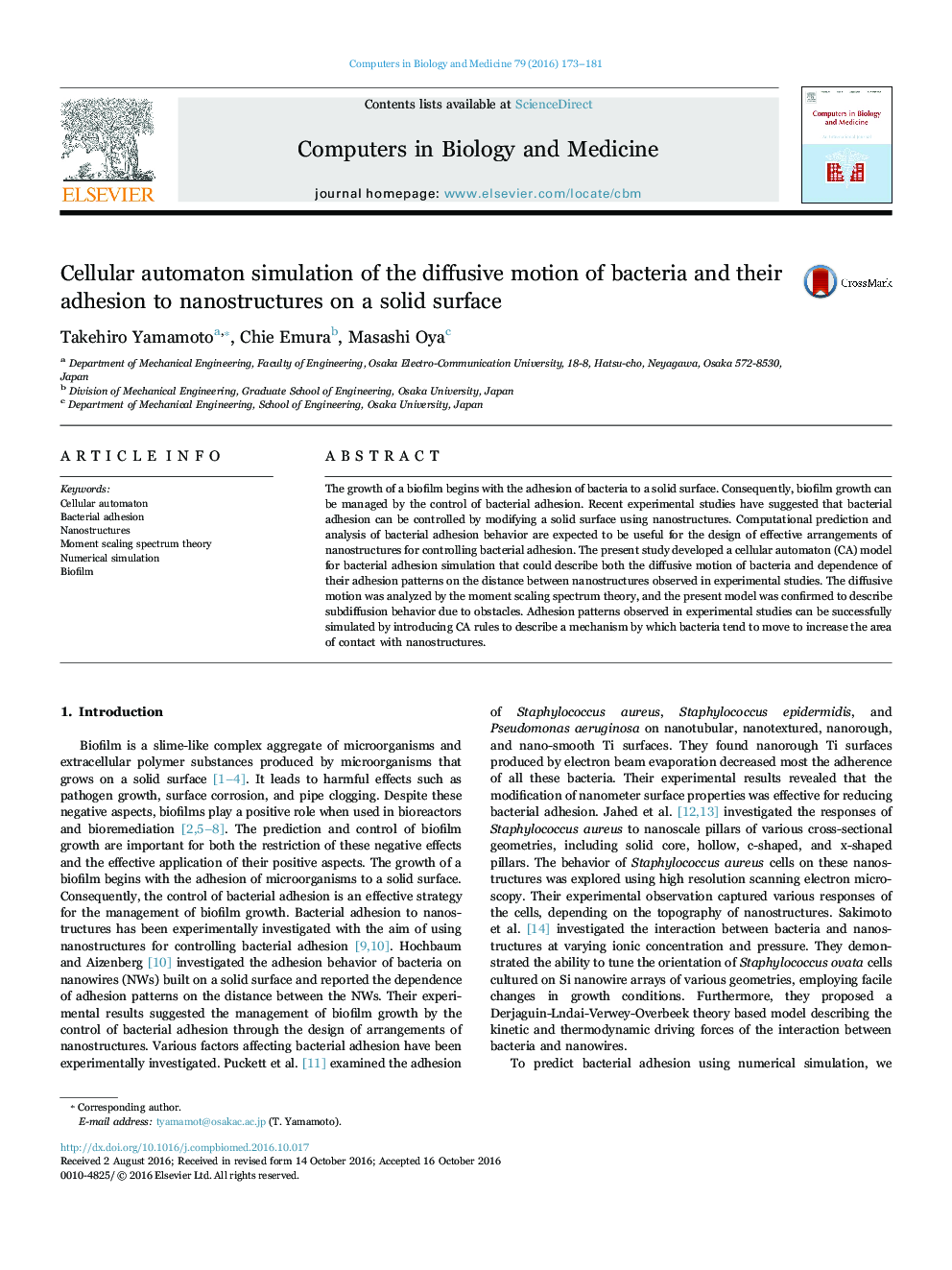| Article ID | Journal | Published Year | Pages | File Type |
|---|---|---|---|---|
| 4965084 | Computers in Biology and Medicine | 2016 | 9 Pages |
Abstract
The growth of a biofilm begins with the adhesion of bacteria to a solid surface. Consequently, biofilm growth can be managed by the control of bacterial adhesion. Recent experimental studies have suggested that bacterial adhesion can be controlled by modifying a solid surface using nanostructures. Computational prediction and analysis of bacterial adhesion behavior are expected to be useful for the design of effective arrangements of nanostructures for controlling bacterial adhesion. The present study developed a cellular automaton (CA) model for bacterial adhesion simulation that could describe both the diffusive motion of bacteria and dependence of their adhesion patterns on the distance between nanostructures observed in experimental studies. The diffusive motion was analyzed by the moment scaling spectrum theory, and the present model was confirmed to describe subdiffusion behavior due to obstacles. Adhesion patterns observed in experimental studies can be successfully simulated by introducing CA rules to describe a mechanism by which bacteria tend to move to increase the area of contact with nanostructures.
Related Topics
Physical Sciences and Engineering
Computer Science
Computer Science Applications
Authors
Takehiro Yamamoto, Chie Emura, Masashi Oya,
